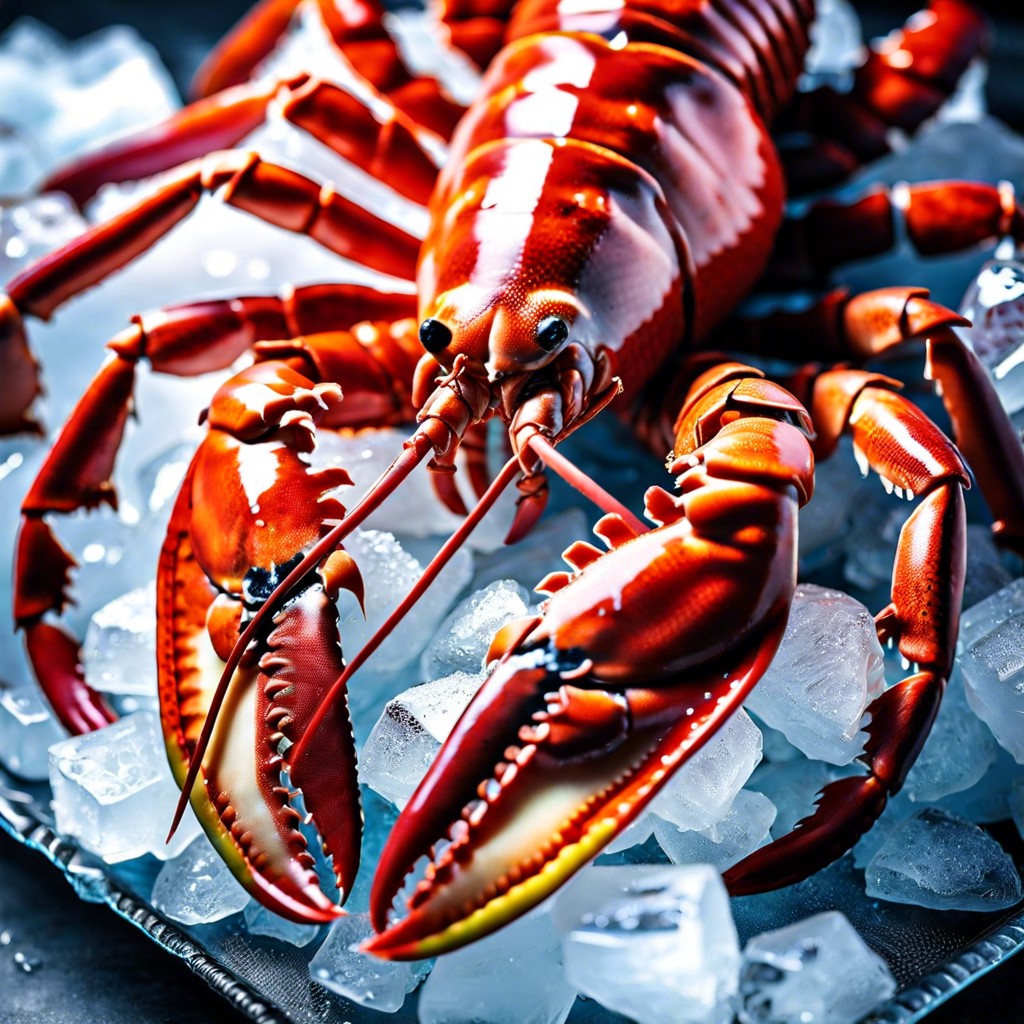Learn the optimal method for grilling lobster tails to achieve perfectly charred, succulent meat.
Key takeaways:
- Select fresh, heavy lobster tails with clean, bright shells.
- Rinse and butterfly the tails for even cooking.
- Consider marinating or brushing with seasoned butter before grilling.
- Grill for 5-7 minutes on shell-side down, then 4-6 minutes on shell-side up.
- Check doneness with a bright red shell, opaque meat, and an internal temperature of 140°F.
Selecting Quality Lobster Tails

When choosing lobster tails, fresh is best, but frozen can do. Look for a tail that feels heavy for its size, which suggests a good meat-to-shell ratio. The shell should be bright and clean. If fresh, the tail should be firm and springy, not limp. Avoid any with discoloration or a fishy smell.
For uniform cooking, select tails that are similar in size. Keep in mind that cold water lobsters tend to have sweeter, more tender meat than their warm water counterparts.
Preparation of Lobster Tails for Grilling
Begin by rinsing the lobster tails under cold water to remove any debris. Pat them dry to ensure proper sear on the grill. Use sharp kitchen shears to cut down the center of the shell, stopping at the tail fin; gently pry the shell apart to expose the meat.
To enhance flavor and texture, slightly butterfly the meat. This means you’ll lift the meat out of the shell while still attached at the fin, resting it on top of the shell. This not only makes for a stunning presentation but also allows the meat to cook more evenly.
Consider marinating the tails in a mixture of melted butter, garlic, and herbs for about 15 minutes, or simply brush them with seasoned butter right before they hit the grill. This prevents the meat from drying out and adds a rich flavor that complements the natural sweetness of the lobster.
Skewering the tails can prevent them from curling as they cook. Insert a skewer lengthwise through the meat to keep the tail straight during the grilling process.
Having prepared the lobster tails as described, you’re now set to move them to the grill where the high, direct heat will create a perfectly charred and delectable seafood experience.
Grilling Lobster Tails
Heat your grill to medium-high, targeting a temperature of approximately 400-450°F.
Meanwhile, ensure lobster tails are at room temperature. Brush tails with oil to prevent sticking and to enhance flavor.
Place the tails shell-side down on the grill for a charred appearance and subtle smokiness. Avoid moving the tails too much; this allows for even cooking and appealing grill marks.
Grill for about 5-7 minutes, then flip to shell-side up. Continue to grill for an additional 4-6 minutes.
Baste with butter or a sauce of choice during the last few minutes for added moisture and richness. The shells should turn bright red and the meat opaque when properly cooked. Keep a close eye to avoid overcooking, leading to tough meat.
Use a meat thermometer for precision, aiming for an internal temperature of 140°F.
Determining the Doneness of Lobster Tails
The challenge lies not in overcooking the delicate meat, which can become tough and rubbery. Look for a bright red shell and white, opaque meat, the hallmarks of a perfectly grilled lobster tail. Use an instant-read thermometer to ensure an ideal internal temperature of 140-145°F, indicating that the lobster tail is cooked through without being overdone. Always insert the thermometer into the thickest part of the meat, avoiding contact with the shell for an accurate reading.
The texture should be firm with a slight give, complemented by the slightest hint of translucency at the center for a juicy bite. Trust visual cues alongside touch and temperature to master the art of grilling lobster tails to perfection.
Serving Grilled Lobster Tail
Enhance the natural sweetness of the meat with a drizzle of melted butter, perhaps infused with garlic or fine herbs for aromatic flair.
A wedge of lemon served on the side allows guests the choice to add a fresh, citrusy zing, which complements the lobster’s rich flavor.
Consider light pairings like a crisp green salad or grilled vegetables that won’t overshadow the main attraction.
If serving with starches, opt for simple preparations such as steamed jasmine rice or a baked potato; these act as blank canvases, letting the lobster shine.
Remember, the optimal temperature for serving is warm—not piping hot—to maintain a tender texture.
A warm plate will ensure the meat retains its heat without continuing to cook on the table.